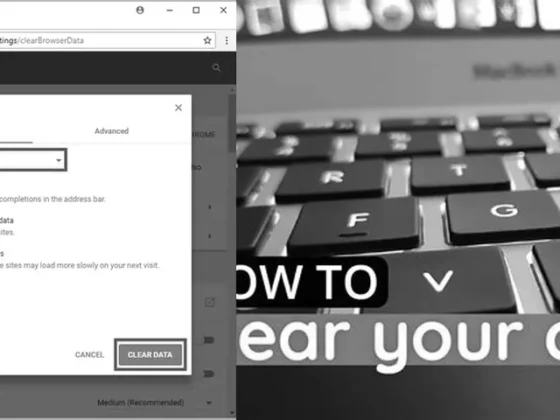Why Is My Screen Touch Not Working: Is your screen touch feeling a bit aloof lately? Frustrating, isn’t it? Well, worry not, because we’ve got you covered! In this blog post, we’ll dive into the depths of unresponsive touchscreen issues and explore the troubleshooting steps you can take to fix them. From restarting your device to managing laptop touchscreen drivers, we’ll leave no stone unturned. So, if you’re tired of tapping away at your screen with no response, keep reading to discover the solutions that will bring your touch back to life. Say goodbye to screen touch woes and hello to a seamless user experience. Let’s get started!
Diagnosing and Fixing Unresponsive Touchscreen Issues
When our touchscreens fail to respond, the frustration is palpable. These issues disrupt our workflow, entertainment, and communication. But fear not – there are several solutions to restore your device’s responsiveness. Let’s delve into the common fixes that can bring your touch interface back to life.
Initial Troubleshooting: Restart Your Device
Restarting your PC or phone is the proverbial “turn it off and on again” approach, but it’s popular for a reason. This simple action can clear temporary glitches and should always be your first step when encountering a touch screen issue. Let’s break down why this helps:
- It clears the RAM, which might have been clogged with too many processes, affecting the touch screen’s functionality.
- It restarts the drivers responsible for the touch screen’s operation, which might have crashed or malfunctioned.
- It can solve minor software conflicts that might have resulted from newly installed apps or updates.
Ensuring Your Operating System is Up-to-Date
Outdated software is a common culprit behind touchscreen woes. Manufacturers often release updates that fix known bugs, including those affecting touchscreens. Thus, checking for updates and upgrading the operating system can be an effective fix:
- For Android and iOS, navigate to your device’s settings menu, select “System,” then “Software Update,” and follow the prompts to install any available updates.
- For PCs, access your system settings, click on “Update & Security,” and check for Windows updates.
Not only can this resolve current issues, but it also protects your device from vulnerabilities and improves overall performance.
Optimizing Device Performance
On Android devices, optimizing device performance can significantly improve touch screen responsiveness. This might involve:
- Disabling special features or developer mode options that may interfere with normal operation.
- Clearing cache and closing unnecessary apps to free up resources.
- Adjusting settings for animations and transitions to reduce processing load.
These tweaks can lead to better touch screen performance, especially on older or lower-spec devices.
Managing Laptop Touchscreen Drivers
If you’re facing problems with a laptop’s touchscreen, it might be a software driver issue. Using Windows Device Manager to enable or reinstall the touch screen driver can often resolve the problem. Here’s how:
- Press Windows key + X and select Device Manager.
- Expand the “Human Interface Devices” section.
- Locate the touch screen device, right-click, and select “Enable” or “Update Driver”.
- If necessary, you can also choose “Uninstall device” and then restart your laptop to automatically reinstall the driver.
Ensuring Proper Connections for Dell Monitors
For touch-enabled Dell monitors, it’s crucial to ensure that the USB cable is properly connected from the monitor to the computer. This enables the touch screen feature and lets the monitor communicate touch inputs to your PC. Always check for secure connections and consider replacing the cable if issues persist.
Addressing iPhone Touch Screen Issues
iPhone users can take several steps to remedy touch screen problems:
- Clean the screen thoroughly to remove any debris, oil, or water that might be interfering with touch sensitivity.
- Disconnect accessories like chargers or headphones and try different outlets or cables to rule out external factors.
- Remove cases or screen protectors that might be applying undue pressure or obstructing the screen.
These actions can often restore full functionality to your iPhone’s touch screen.
Understanding Touchscreen Errors
Touchscreens can exhibit a range of issues that signal underlying problems:
- Screen Discoloration: Could indicate physical damage or a failing display component.
- Screen Heat: Excessive heat might be a sign of an overworked processor or battery issue.
- Lines on the Screen: Usually suggest hardware failure, potentially requiring professional repair.
- Screen Flickering: Can be caused by software glitches or display driver issues.
- Dead Pixels: These are individual pixels that no longer light up and may necessitate a screen replacement.
Disabling the Touch Screen on Windows
If you need to disable the touch screen on a Windows device temporarily, perhaps for troubleshooting or to prevent accidental inputs, you can do so easily:
- Press Windows key + X and select Device Manager.
- Expand Human Interface Devices.
- Right-click your touch screen device and choose Disable.
This can be a helpful diagnostic step or simply a way to convert your touch laptop to a traditional non-touch one.
How to Check If Touch Screen is Working Properly
To test your touch screen’s functionality, you can use hardware test codes on Android or access touch keyboard settings on Windows. Here’s a brief guide:
- For Android, dial specific codes in your phone app to access hardware tests (consult your device’s manual or online resources for the exact codes).
- For Windows, navigate to Settings > Time & language > Typing. Expand the “Touch keyboard” section and adjust the settings as needed to test the keyboard’s response.
These tests can help you determine if the touch screen is registering input correctly or if there’s a particular area that’s unresponsive.
Conclusion
Dealing with an unresponsive touch screen can be disheartening, but by following these steps, you can diagnose and often resolve the issue on your own. Whether it’s a simple reboot, a driver update, or a hardware test, the solution might be just a few clicks or taps away. If the problem persists, it could be time to seek professional repair. Remember, the touch screen is your gateway to interacting with your digital world, so keeping it in top condition is essential for an optimal user experience.
FAQ & Related Questions about Screen Touch Not Working
Q: Why is my screen touch not working?
A: There could be several reasons for your screen touch not working, such as an unresponsive touchscreen, a discolored screen, a hot screen, lines on the screen, screen flickering, or dead pixels.
Q: How can I disable the touch screen on my device?
A: To disable the touch screen on your device, press the Windows key + X to open the Power User menu, select Device Manager, expand Human Interface Devices, right-click your touch screen device, and choose Disable.
Q: How can I check if my touch screen is working?
A: You can check if your touch screen is working by using the Android hardware test codes and their meanings. These codes can help diagnose any issues with your touch screen.
Q: Why does my iPhone screen freeze and not respond to touch?
A: There are several possible reasons for your iPhone screen freezing and not responding to touch, including low battery, running out of storage space, incompatible apps, or an outdated operating system.
Q: How can I determine if my iPhone touch screen is broken?
A: There are a few common signs that indicate your iPhone screen needs a replacement, such as a cracked screen or an unresponsive touchscreen. If you experience any of these signs, it may be time to replace your iPhone’s screen.
Q: How can I fix an unresponsive touch screen?
A: You can try restarting your PC or phone, as this may help resolve the unresponsive touch screen issue. Additionally, checking for updates and upgrading the operating system can also fix the problem.


